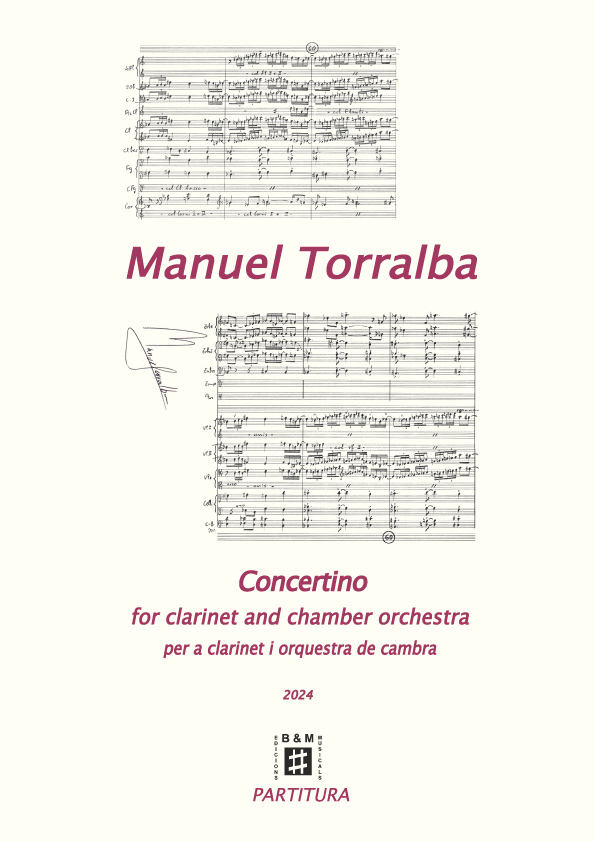Description
Author
Format
Instrumentation
Plantilla
Duration
Pages
Year of composition
ISMN
Ref.
This Concertino is inspired by three specific regions of Eastern Europe: Hungary, Bulgaria, and Romania. These regions have distinct musical heritages, but share common threads woven through centuries of cultural exchanges and mutual influences.
Following the introduction, a Bulgarian folk tune used for dance known as “Cekurjankino Horo,” is incorporated. This traditional Bulgarian dance is distinguished by its distinctive rhythmic structure and modal qualities such as complex and stable time meters – 7/16 – and a particular style of ornamentation known as the tresene (shaking), which involves rapid and subtle variations in pitch that add emotional depth and rhythmic vitality to the melodic line.
In its traditional context, the Horo is a line dance in which dancers hold hands in an open circle, moving counterclockwise with complicated footwork that mirrors the complex rhythmic subdivisions.
As its name suggests, the Concertino has the reduced form and duration of a proper concerto. Each of the three movements is uninterrupted and all of them are preceded by an introduction, in some cases long and in others short.
After a long introduction consisting of microtonal oscillations on the strings while an almost cadential statement appears in the clarinet, we come to the first theme of the moment. The aforementioned Bulgarian folk theme appears first in the clarinet as a solo, but quickly moves to the entire orchestra in fugatos, strettos, canons, and as an accompanying figure.
The second movement, preceded by a brief reminiscence of the first, with bird-like sounds in the clarinet and a distinctly rural feel, appears on the strings with clear and distinguished counterpoint, imitation of the new theme, and subtle appearances of the winds to add a bit of color to the melody. Finally, a new theme appears while the flute, oboe, and clarinet continue with the first theme. This is the only movement in which the soloist does not play.
After a quasi cadenza by the solo clarinet, the preparations for the final movement continue. It will be composed of all the themes plus two new ones, all of them sometimes played simultaneously until the coda, where a brief new theme will appear, composed by all the others until the end.



















There are no reviews yet.